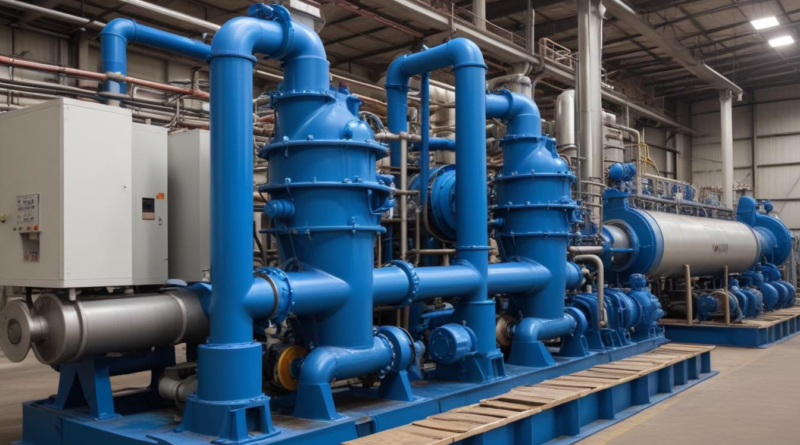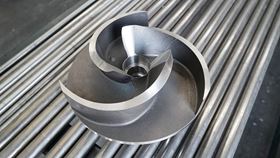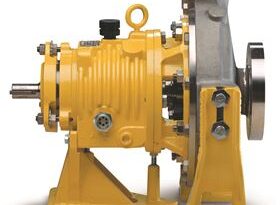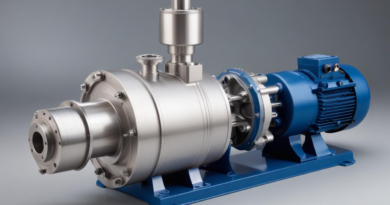the role of pumps in industrial drying processes
Industrial drying pumps play a critical role in ensuring the efficiency and effectiveness of drying processes across various industries. Understanding the different types of pumps available is essential for optimizing performance and achieving desired outcomes. The primary categories of pumps used in drying applications include centrifugal pumps, positive displacement pumps, and vacuum pumps, each offering unique functionalities tailored to specific requirements.
| Type of Pump | Functionality | Applications in Drying | Key Features |
|---|---|---|---|
| Centrifugal Pumps | Utilize rotational energy to transfer fluids by converting velocity into flow. | Bulk liquid handling, slurry transfer, and fluid circulation in dryers. | High flow rates, simple design, cost-effective, suitable for low-viscosity fluids. |
| Positive Displacement Pumps | Move fluid by trapping a fixed amount and forcing it through the system. | Precise dosing, handling of high-viscosity materials, and consistent flow rates. | High accuracy, capable of handling viscous and abrasive fluids, suitable for precise applications. |
| Vacuum Pumps | Create a partial vacuum to facilitate the drying process by lowering the boiling point of liquids. | Drying of heat-sensitive materials, vacuum drying systems, and enhanced moisture removal. | Efficient moisture extraction, enhances drying speed, essential for vacuum-assisted drying processes. |
- Centrifugal Pumps are favored for their ability to handle large volumes of liquid with minimal maintenance. Their straightforward design makes them easily adaptable to various drying systems, particularly where continuous flow is required.
- Positive Displacement Pumps are ideal for applications requiring precise control over fluid quantities. Their ability to maintain consistent flow rates ensures uniform drying, which is crucial in processes where exact moisture levels are necessary.
- Vacuum Pumps enhance the drying process by reducing the ambient pressure, thereby lowering the liquid’s boiling point. This allows drying to occur at lower temperatures, preserving the integrity of heat-sensitive materials.
Relevance in Drying Processes
The selection of the appropriate pump type directly impacts the efficiency and quality of the drying process. Centrifugal pumps are typically used in scenarios where high flow rates are essential, such as in the circulation of cooling or heating fluids within large-scale dryers. Positive displacement pumps, with their ability to handle viscous and abrasive materials, are suited for specialized drying environments where precise fluid control is paramount. Vacuum pumps, on the other hand, are indispensable in applications requiring rapid moisture removal and the handling of delicate materials that cannot withstand high temperatures.
Moreover, the integration of these pumps into drying systems often involves considerations of system design, compatibility with other equipment, and the specific drying requirements of the material being processed. Understanding the distinct functionalities and roles of each pump type enables engineers and operators to design more effective drying systems, ultimately leading to improved productivity and product quality.
By carefully selecting the appropriate pump type based on the specific needs of the drying application, industries can optimize their drying processes, reduce energy consumption, and achieve superior results.
pump selection criteria
Selecting the appropriate pump for industrial drying processes involves a comprehensive evaluation of several critical factors to ensure optimal performance and reliability. Understanding these pump selection criteria is essential for engineers and operators to make informed decisions that align with the specific requirements of their drying applications.
Flow Rate and Head Requirements
The desired flow rate and head (pressure) are primary considerations in pump selection. The flow rate must match the drying system’s capacity to ensure efficient moisture removal without overloading the system. Similarly, the head requirement dictates the pump’s ability to overcome the resistance within the drying system, including factors such as pipe length, elevation changes, and friction losses.
- Flow Rate: Determined by the volume of fluid to be moved per unit time, typically measured in gallons per minute (GPM) or liters per second (L/s).
- Head: The height to which the pump can raise the fluid, measured in feet or meters, indicating the pressure required to move the fluid through the system.
Fluid Properties
Understanding the properties of the fluid being handled is crucial. Factors such as viscosity, temperature, corrosiveness, and the presence of solids or abrasives can significantly influence the type of pump selected.
- Viscosity: High-viscosity fluids may require positive displacement pumps to ensure consistent flow.
- Temperature: Elevated temperatures might necessitate pumps made from materials that can withstand thermal stress.
- Corrosiveness: Corrosive fluids require pumps with compatible materials to prevent degradation and ensure longevity.
- Solids and Abrasives: The presence of solids may require pumps with robust construction and wear-resistant components.
Energy Efficiency
With increasing emphasis on sustainability, energy efficiency has become a pivotal criterion. Selecting pumps that operate efficiently under the required conditions can lead to significant energy savings and reduced operational costs.
- Motor Efficiency: High-efficiency motors consume less power while delivering the necessary performance.
- System Curves: Matching the pump’s performance curve with the system curve ensures optimal operation and minimizes energy wastage.
Maintenance and Reliability
The maintenance requirements and overall reliability of the pump are vital for minimizing downtime and ensuring continuous operation. Pumps with fewer moving parts and simpler designs typically require less maintenance and offer higher reliability.
- Ease of Maintenance: Pumps that allow easy access to components facilitate quicker repairs and routine maintenance.
- Durability: Robust construction materials and designs enhance the pump’s lifespan and reliability.
Cost Considerations
While initial acquisition costs are important, it is essential to consider the total cost of ownership, including installation, operation, and maintenance expenses. Balancing upfront costs with long-term benefits ensures a cost-effective selection.
- Initial Cost: The purchase price of the pump should fit within the project’s budget constraints.
- Total Cost of Ownership: Evaluating ongoing operational and maintenance costs provides a complete financial picture.
Compatibility and Integration
Ensuring that the selected pump is compatible with existing equipment and can be seamlessly integrated into the current drying system is essential for smooth operations. This includes considerations of piping sizes, connection types, and control systems.
- Physical Compatibility: Matching pump dimensions and connection types with the system’s infrastructure.
- Control Integration: Ensuring the pump can interface with existing control systems for automated operation.
Environmental and Regulatory Compliance
Compliance with environmental regulations and industry standards is non-negotiable. Selecting pumps that meet or exceed these requirements ensures legal compliance and promotes sustainable practices.
- Emission Standards: Pumps should comply with regulations regarding emissions, especially in applications involving volatile substances.
- Industry Standards: Adherence to standards such as ANSI, API, or ISO ensures quality and reliability.
Space and Installation Constraints
Physical space limitations and specific installation requirements can influence pump selection. Compact designs may be necessary for installations with limited space, while certain applications might require specific mounting configurations.
- Footprint: The pump’s size must fit within the designated space without hindering other operations.
- Mounting Options: Flexible installation options can accommodate various facility layouts and constraints.
Performance and Scalability
The ability of the pump to meet current performance needs while allowing for future scalability is an important consideration. Selecting a pump that can handle increased capacities or adapt to changing process requirements ensures long-term utility.
- Scalability: Flexibility to upgrade or modify the pump to accommodate future process expansions.
- Performance Margins: Choosing pumps with performance capabilities that exceed current requirements provides a buffer for unexpected demands.
By meticulously evaluating these criteria, industries can select industrial drying pumps that not only fulfill their immediate operational needs but also contribute to sustainable and efficient drying processes. This strategic approach to pump selection enhances overall system performance, reduces operational costs, and ensures the longevity and reliability of the drying system.
energy efficiency considerations
Energy efficiency plays a pivotal role in the operation of industrial drying systems, directly influencing both operational costs and environmental impact. Optimizing the energy consumption of industrial drying pumps not only enhances the overall sustainability of the drying process but also contributes to significant cost savings over time. Several key factors must be considered to achieve high energy efficiency in these applications.
Motor Efficiency
The efficiency of the pump’s motor is a fundamental aspect of energy conservation. High-efficiency motors convert a greater proportion of electrical energy into mechanical energy, reducing wasted power and lowering energy bills. Selecting motors that meet or exceed industry standards, such as those certified by the National Electrical Manufacturers Association (NEMA) or the International Electrotechnical Commission (IEC), ensures optimal performance and energy usage.
- High-Efficiency Motors: Motors with higher efficiency ratings consume less power for the same output, leading to lower energy costs.
- Energy Star Compliance: Motors that comply with Energy Star standards are designed to use less energy without compromising performance.
Variable Frequency Drives (VFDs)
Implementing Variable Frequency Drives (VFDs) is an effective strategy to enhance the energy efficiency of industrial drying pumps. VFDs adjust the motor speed to match the specific requirements of the drying process, ensuring that energy is not wasted by running the pump at full speed unnecessarily.
- Load Matching: VFDs allow the pump to operate at speeds that correspond to the actual demand, reducing excess energy consumption.
- Soft Start and Stop: By gradually ramping the motor speed, VFDs minimize energy spikes and mechanical stress, extending the pump’s lifespan.
- Energy Savings: Studies have shown that implementing VFDs can lead to energy savings of up to 30% in variable load applications.
Proper Pump Sizing
Accurately sizing pumps is essential for maximizing energy efficiency. An oversized pump can lead to excessive energy consumption and increased wear and tear, while an undersized pump may not meet the drying system’s requirements, leading to inadequate performance and potential process disruptions.
- Flow Rate and Head Assessment: Conducting a thorough analysis of the required flow rate and head ensures that the pump operates within its optimal efficiency range.
- System Curve Alignment: Matching the pump curve with the system curve guarantees that the pump operates near its Best Efficiency Point (BEP), minimizing energy losses.
System Optimization
Optimizing the overall drying system can significantly enhance energy efficiency. This involves minimizing friction losses, ensuring proper alignment of system components, and maintaining optimal operating conditions.
- Piping Design: Designing piping layouts with minimal bends and fittings reduces friction losses, allowing the pump to operate more efficiently.
- Regular Maintenance: Keeping pumps and associated equipment well-maintained ensures that they operate at peak efficiency, preventing energy wastage due to leaks or mechanical issues.
- Heat Recovery Systems: Integrating heat recovery systems can capture and reuse waste heat from the drying process, thereby reducing the overall energy demand.
Advanced Technologies
Emerging technologies offer new avenues for improving the energy efficiency of industrial drying pumps. Innovations such as smart sensors and predictive maintenance tools enable more precise control and monitoring of pump operations.
| Technology | Functionality | Energy Efficiency Benefits |
|---|---|---|
| Smart Sensors | Provide real-time data on pump performance and operating conditions. | Allow for immediate adjustments to optimize energy usage and detect inefficiencies early. |
| Predictive Maintenance | Uses data analytics to predict potential failures before they occur. | Reduces downtime and ensures pumps are always operating at optimal efficiency. |
| Energy Management Systems | Integrate with pumps to monitor and control energy consumption across the drying process. | Provide comprehensive insights and automated controls to enhance overall energy efficiency. |
Energy Efficiency Metrics and Standards
Adhering to established energy efficiency metrics and standards is crucial for benchmarking performance and ensuring continuous improvement. Organizations such as the American Society of Mechanical Engineers (ASME) and the Hydraulic Institute provide guidelines and standards that help in evaluating and enhancing pump efficiency.
- Efficiency Ratings: Utilizing standardized efficiency ratings allows for the comparison of different pumps and the selection of the most energy-efficient models.
- Performance Audits: Conducting regular energy audits helps in identifying areas where energy efficiency can be improved.
- Certification Programs: Participating in certification programs ensures that pumps meet or exceed industry energy efficiency standards.
Ultimately, focusing on energy efficiency considerations in the selection and operation of industrial drying pumps not only reduces operational costs but also supports broader sustainability goals. By integrating high-efficiency motors, VFDs, proper sizing, system optimization, and advanced technologies, industries can significantly enhance the role and functionality of their drying pumps, leading to more efficient and environmentally responsible drying processes.
maintenance and troubleshooting
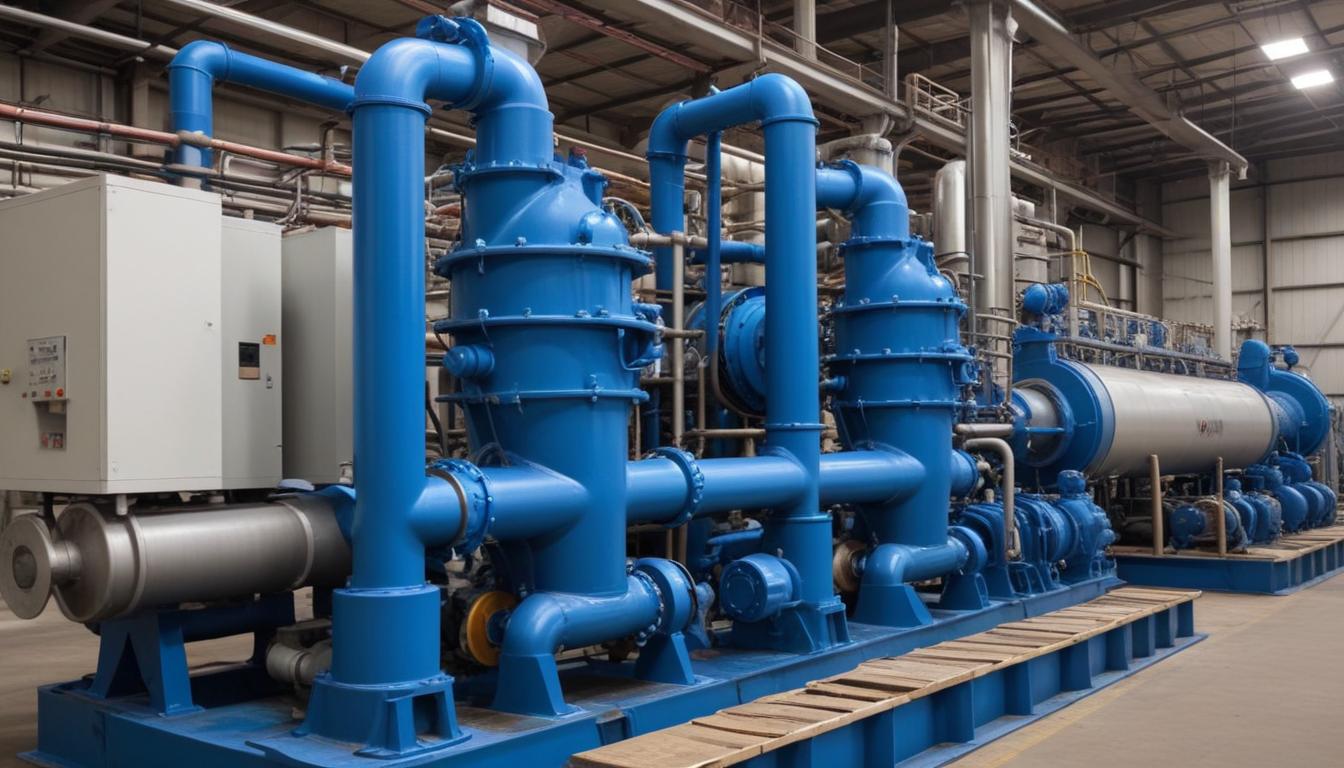 Regular Maintenance Practices
Regular Maintenance Practices
Ensuring the longevity and optimal performance of industrial drying pumps requires a structured maintenance regimen. Implementing routine maintenance tasks helps in identifying potential issues before they escalate, thereby minimizing downtime and extending the pump’s operational life.
- Scheduled Inspections: Regularly inspecting pumps for signs of wear, corrosion, and leaks is essential. These inspections should include visual assessments of pump components, seals, and connections.
- Lubrication: Maintaining proper lubrication of moving parts reduces friction and wear. It is crucial to follow the manufacturer’s recommendations for lubricant types and intervals to prevent contamination and ensure smooth operation.
- Filter Replacement: Filters play a vital role in protecting the pump from contaminants. Regularly replacing or cleaning filters prevents blockages and maintains efficient fluid flow.
- Alignment Checks: Ensuring that the pump and motor are correctly aligned minimizes mechanical stress and prevents premature bearing failure. Regular alignment checks should be part of the maintenance routine.
- Seal Integrity: Inspecting and maintaining seals prevents leaks and maintains the desired pressure levels within the drying system. Replacing worn or damaged seals promptly is critical to maintaining system integrity.
Common Issues and Troubleshooting
Despite regular maintenance, industrial drying pumps may encounter operational challenges. Understanding common issues and their solutions is essential for effective troubleshooting and minimizing operational disruptions.
| Issue | Possible Causes | Solutions |
|---|---|---|
| Unusual Noise | Worn bearings, misalignment, cavitation |
|
| Overheating | Restricted flow, inadequate lubrication, high ambient temperatures |
|
| Reduced Flow Rate | Clogged filters, wear in pump components, air leaks |
|
| Vibrations | Imbalanced impellers, loose mounting, hydraulic issues |
|
| Seal Failures | Excessive pressure, improper seal installation, material incompatibility |
|
Best Practices for Maintenance and Troubleshooting
Adopting best practices in maintenance and troubleshooting enhances the reliability and efficiency of industrial drying pumps. The following strategies are recommended to maintain optimal pump functionality:
- Develop a Maintenance Schedule: Establishing a comprehensive maintenance schedule based on manufacturer recommendations and operational demands ensures that all critical tasks are performed timely.
- Training and Documentation: Providing adequate training for maintenance personnel and maintaining detailed documentation of maintenance activities and troubleshooting steps facilitates effective pump management.
- Use of Diagnostic Tools: Leveraging diagnostic tools such as vibration analyzers, thermal imaging cameras, and flow meters aids in early detection of issues and precise troubleshooting.
- Spare Parts Management: Maintaining an inventory of essential spare parts minimizes downtime by enabling quick replacements during failures.
- Collaborate with Manufacturers: Partnering with pump manufacturers for technical support and accessing the latest maintenance guidelines ensures that pumps are maintained according to the best industry practices.
Predictive Maintenance Techniques
Incorporating predictive maintenance techniques can significantly enhance the maintenance strategy by anticipating potential failures and addressing them proactively. Techniques such as condition monitoring and data analytics provide valuable insights into pump health and performance.
- Condition Monitoring: Continuous monitoring of parameters like vibration, temperature, and pressure helps in assessing the real-time condition of the pump and identifying anomalies.
- Data Analytics: Analyzing historical and real-time data enables the identification of trends and patterns that may indicate impending failures, allowing for timely interventions.
- Remote Monitoring: Implementing remote monitoring systems provides the ability to track pump performance and maintenance needs from centralized locations, facilitating swift responses to issues.
Conclusion
Effective maintenance and troubleshooting are pivotal in maximizing the performance and lifespan of industrial drying pumps. By adhering to regular maintenance practices, promptly addressing common issues, and leveraging advanced predictive maintenance techniques, industries can ensure the reliable operation of their drying systems. This not only enhances the functionality of the pumps but also contributes to overall operational efficiency and cost-effectiveness.
future trends in pump technology
The landscape of pump technology is continually evolving, driven by advancements in engineering, materials science, and digital technologies. These future trends are set to significantly enhance the role and functionality of industrial drying pumps, making them more efficient, reliable, and adaptable to the changing needs of various industries.
Integration with Internet of Things (IoT)
The integration of pumps with the IoT is revolutionizing how industrial drying systems operate. By connecting pumps to a network, real-time monitoring and data collection become possible, enabling more informed decision-making and streamlined operations.
- Real-Time Monitoring: IoT-enabled pumps can continuously monitor performance metrics such as flow rate, pressure, and temperature, providing immediate feedback and alerts for any deviations.
- Remote Diagnostics: Maintenance teams can access pump data remotely, allowing for quicker diagnostics and troubleshooting without the need for on-site inspections.
- Enhanced Data Analytics: The vast amounts of data generated by IoT devices can be analyzed to identify trends, optimize performance, and predict maintenance needs.
Smart Pump Systems
Smart pumps represent the next generation of industrial drying pumps, incorporating advanced sensors and intelligent control systems to optimize operations automatically.
- Adaptive Control: Smart pumps can adjust their operation in real-time based on changing process conditions, ensuring optimal performance and energy usage.
- Automated Fault Detection: Integrated sensors can detect anomalies and initiate corrective actions without human intervention, reducing downtime and extending pump lifespan.
- User-Friendly Interfaces: Enhanced interfaces provide operators with intuitive controls and comprehensive insights into pump performance, facilitating easier management and adjustments.
Energy Efficiency Innovations
As energy costs rise and sustainability becomes a priority, pump manufacturers are focusing on developing more energy-efficient models. These innovations not only reduce operational costs but also minimize the environmental impact of industrial drying processes.
| Innovation | Description | Benefits |
|---|---|---|
| Advanced Motor Designs | Utilizing high-efficiency motors and optimizing motor-pump matching to reduce energy consumption. | Lower energy bills and reduced carbon footprint. |
| Energy Recovery Systems | Implementing systems that capture and reuse energy generated during pump operation. | Increased overall system efficiency and cost savings. |
| Variable Speed Drives (VSDs) | Enhancing the functionality of VFDs to provide more precise speed control based on process demands. | Optimized energy usage and improved pump performance. |
Advanced Materials and Manufacturing
The use of cutting-edge materials and manufacturing techniques is paving the way for more durable and versatile pumps. These advancements enhance the pump’s ability to handle a wider range of fluids and operating conditions.
- Corrosion-Resistant Alloys: Incorporating materials such as stainless steel and titanium increases pump longevity and reduces maintenance needs in corrosive environments.
- 3D Printing Technology: Additive manufacturing allows for the creation of complex pump components with improved precision and reduced material waste.
- Composite Materials: Utilizing lightweight and high-strength composites can improve pump efficiency and reduce overall system weight.
Enhanced Control Systems and Automation
Modern control systems are becoming more sophisticated, enabling greater automation and precision in pump operations. These systems facilitate seamless integration with other industrial processes, enhancing overall system efficiency.
- Programmable Logic Controllers (PLCs): Advanced PLCs offer more robust and flexible control options, allowing for complex automation schemes and seamless integration with other machinery.
- Digital Twins: Creating digital replicas of pump systems enables simulation and optimization of pump performance without physical trials.
- Automated Calibration: Automated systems can periodically calibrate pump settings to maintain optimal performance and adapt to changing process conditions.
Predictive Analytics and Artificial Intelligence (AI)
The incorporation of AI and predictive analytics into pump systems is transforming maintenance and operational strategies. These technologies enable proactive management, reducing downtime and extending pump lifespans.
- Predictive Maintenance: AI algorithms analyze data from sensors to predict potential failures before they occur, allowing for timely maintenance interventions.
- Performance Optimization: Machine learning models can identify patterns and optimize pump settings for maximum efficiency under varying conditions.
- Anomaly Detection: AI-driven systems can detect abnormal behavior in pump operations, triggering alerts and corrective actions to prevent issues.
Sustainability and Eco-Friendly Designs
Sustainability is becoming a key focus in pump design, with manufacturers striving to create more environmentally friendly products. These designs not only comply with regulatory standards but also support companies’ sustainability goals.
- Eco-Friendly Materials: Using recyclable and non-toxic materials reduces the environmental impact of pump manufacturing and disposal.
- Energy-Efficient Designs: Pumps designed to operate with minimal energy consumption contribute to overall sustainability efforts.
- Lifecycle Assessments: Conducting comprehensive lifecycle assessments ensures that pumps are designed for longevity and minimal environmental impact from production to end-of-life.
Modular and Scalable Pump Solutions
The demand for flexible and adaptable pump solutions is driving the development of modular and scalable designs. These pumps can be easily reconfigured or expanded to meet changing operational requirements.
- Modular Components: Utilizing interchangeable parts allows for easy upgrades and maintenance, reducing downtime and costs.
- Scalable Configurations: Pumps that can be scaled up or down based on process demands offer greater flexibility and long-term usability.
- Customizable Systems: Tailoring pump systems to specific applications ensures optimal performance and integration with existing infrastructure.
Conclusion
The future of pump technology in industrial drying processes is marked by significant advancements that enhance efficiency, reliability, and sustainability. By embracing these trends, industries can ensure that their drying systems remain competitive, cost-effective, and aligned with evolving environmental standards. The continuous innovation in industrial drying pumps underscores their critical role in optimizing drying operations and meeting the dynamic demands of modern manufacturing and processing environments.

